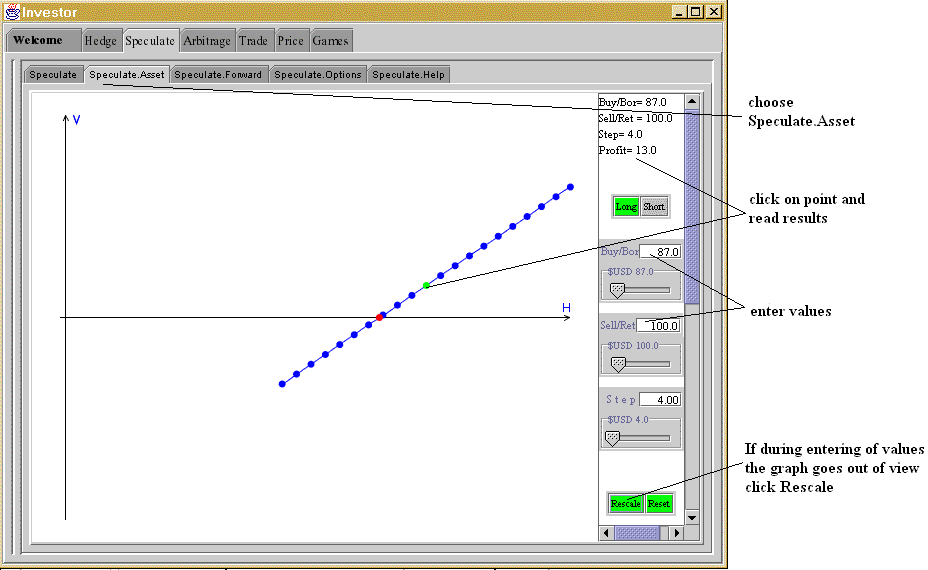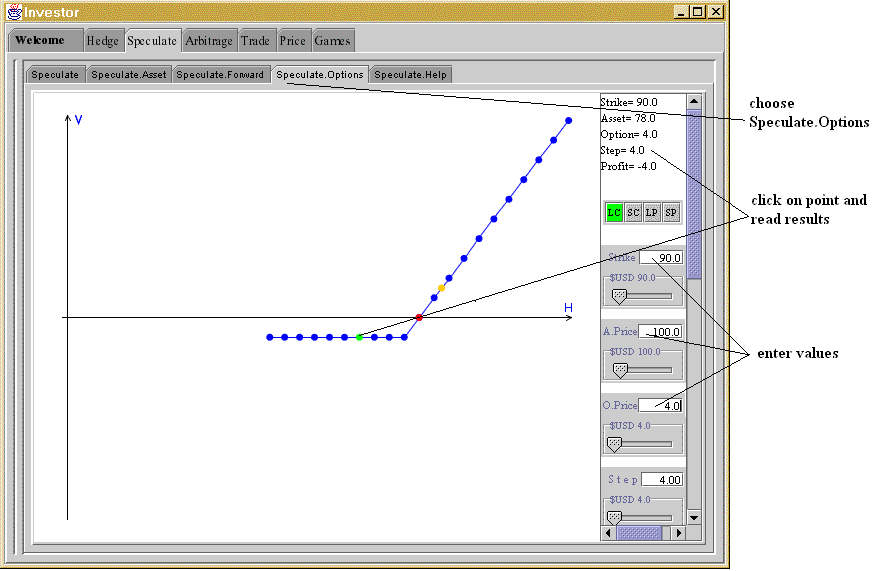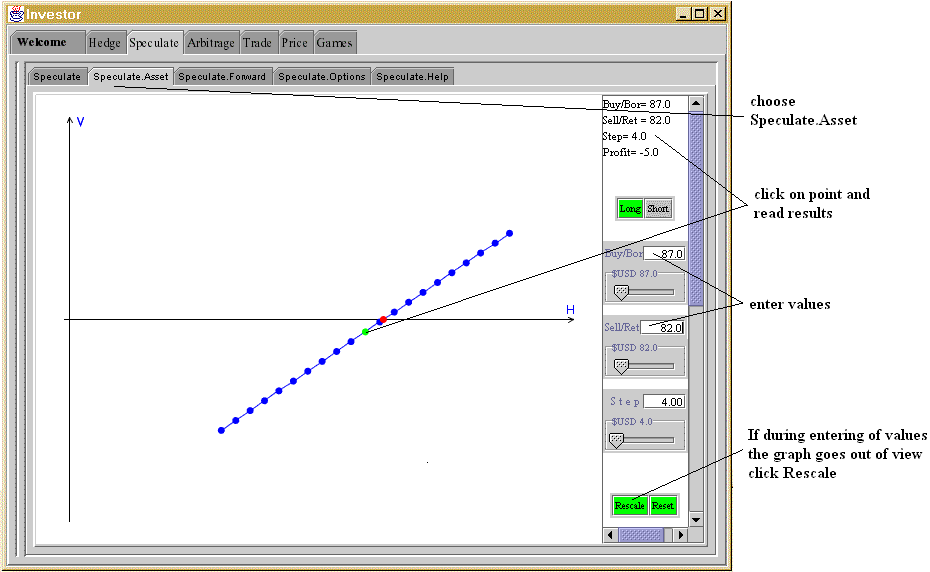

If the initial cost of the option is taken into account the net profit is calculated as follows:
profit on exercise = $10 cost of option = $ 4 ------------------------- net profit = $ 6The following picture shows this case in Investor:

Your net profit is 150% of the up-front premium (the price of the option):
If you initially had purchased the stock XYZ itself instead of option, your gain would have been:
The following picture shows this scenario in Investor:

In this case your net profit would have been only 15%:
150% vs 15%, incredible! That's the answer to the question above about dramatically increasing your profit!
But wait, - you say, - something is wrong here, there is no such a thing as
free lunch!
And you are right. What you pay for this huge increase in profit is the risk
level you have exposed yourself to. What is the risk? You risk to lose
100% of your initial investment, or the amount you paid for the option. If
the stock price will fall below the strike price of $90, you will not
exercise the option (there is no point in buying for $90 the stock
that has a market value of less than $90) and you lose whole initial
investment of $4 that you paid for the option. In this case your loss is
100% of initial investment. This case in Investor is shown below:

If you initially had purchased the stock XYZ itself instead of option and stock price had fallen to $82, your loss would have been:
This case in Investor is shown below:

Your net loss in this case is only 5.75% (of initial investment of $87):
See the difference - loosing 100% or 5.75%? that's the risk of playing with options, it's like playing in casino, you win a lot or lose everything.
So, in deciding of whether to invest in options or not you have to decide the
comfortable risk level, risk you are ready to expose yourself to. On the
bright side is that your downside risk is limited by option price ( your
maximum loss is price of option), while your upside profit is theoretically
limitless, you can gain any huge amount depending on underlying stock price
at exercise time.
